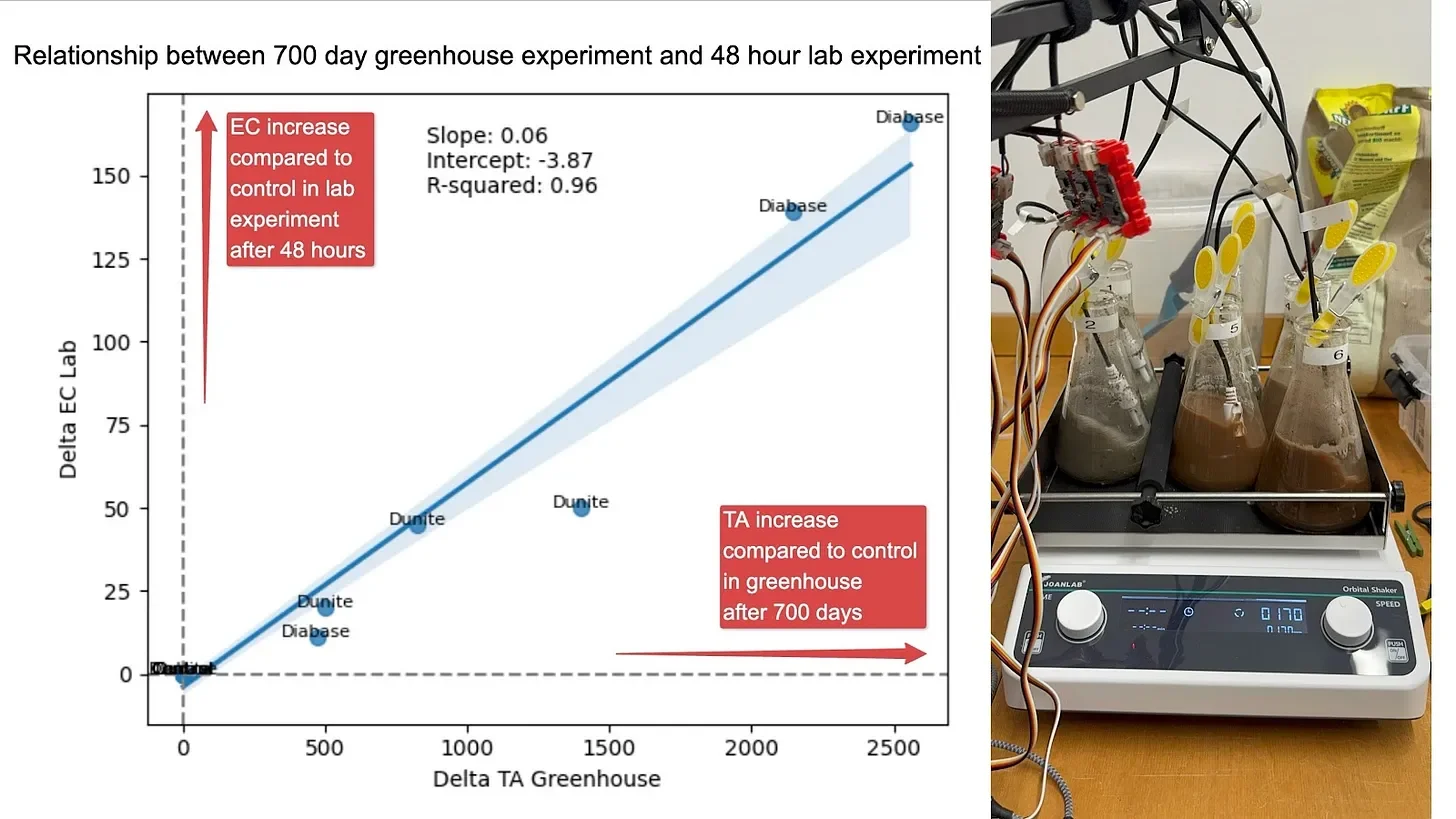A simple lab test that might be able to predict the suitability of a specific rock/soil combination for EW-CDR
In 2 days instead of 200+ days!
From our field and greenhouse experiments, we have learned that the same rock applied to different soils will often cause different CDR effects (judged by alkalinity increase in leachate), including some total flops. In our 2023/2024 greenhouse experiment with 400 pots, we needed about 200-250 days to assess if a soil/rock combination shows a significant CDR effect -- if there was one at all. This means that after applying rock it takes about a year even in a controlled environment until one can actually assess if the rock was spent in vain or not. In-field experiments would likely take even longer.
We may have found a way to differentiate between good and bad rock/soil combinations using a simple and cheap 48 hour lab experiment. In our lab this approach works with most rock/soil combinations that we have tested in our greenhouse over 700 days. We think that if this turns out to be applicable to many more soils this approach might allow us to pre-assess the chance of a successful CDR application thus lowering the risk of useless rock deployments. All you would need are a few hundred grams of rock and soil… and 48 hours.
How does this work? We bought a shaker and Erlenmeyer flasks (see photos/video). In each flask we added 30 g of rock and 80 g of soil to 150 g of distilled water and let it mix for 48 hours while measuring EC. This way we “replayed” 30 soil-rock variations from our 2 year greenhouse experiment in less than 3 weeks.
You can see the result above: The x-axis plots the relative delta (to control) in accumulated alkalinity (TA) of our greenhouse experiments after 700 days, which is our primary CDR indicator. The y-axis plots the relative delta in electrical conductivity (EC, as a proxy for TA) of the shaker experiments using the same rock/soil combination - AFTER ONLY 48 HOURS. With this data we would have known in advance, that some rock/soil combinations will only do very little or no CDR. In the greenhouse it took >200 days to differentiate between flops and hits.
With an EW project you do not want to end up on the left of this graph. That's where there was no increase in leachate alkalinity and spreading the rock on such soils was a long and expensive process involving monitoring and hard work without having a climate relevant effect to show.
These relationships are often rock dust dependent meaning that some rocks have very different patterns, but with the same rock on different soils at least the qualitative relationship between the longterm TA data and the short term EC data was quite stable.
To be honest, we do not fully understand why this seems to work well. But it doesn't look like an accidental fluke either. It seems the slurry based process mimics some decisive processes that take much longer in the field/soil. For sure, the ubiquitous water speeds up reactions whilst the continuous shaking creates collisions between particles that might remove coatings from the rock dust grains, etc.
Here is the download of the PDF report (18 pages, 2 MB):
A potential approach for rapid identification of CDR-suitable rock_soil combinations-CDI.pdf

